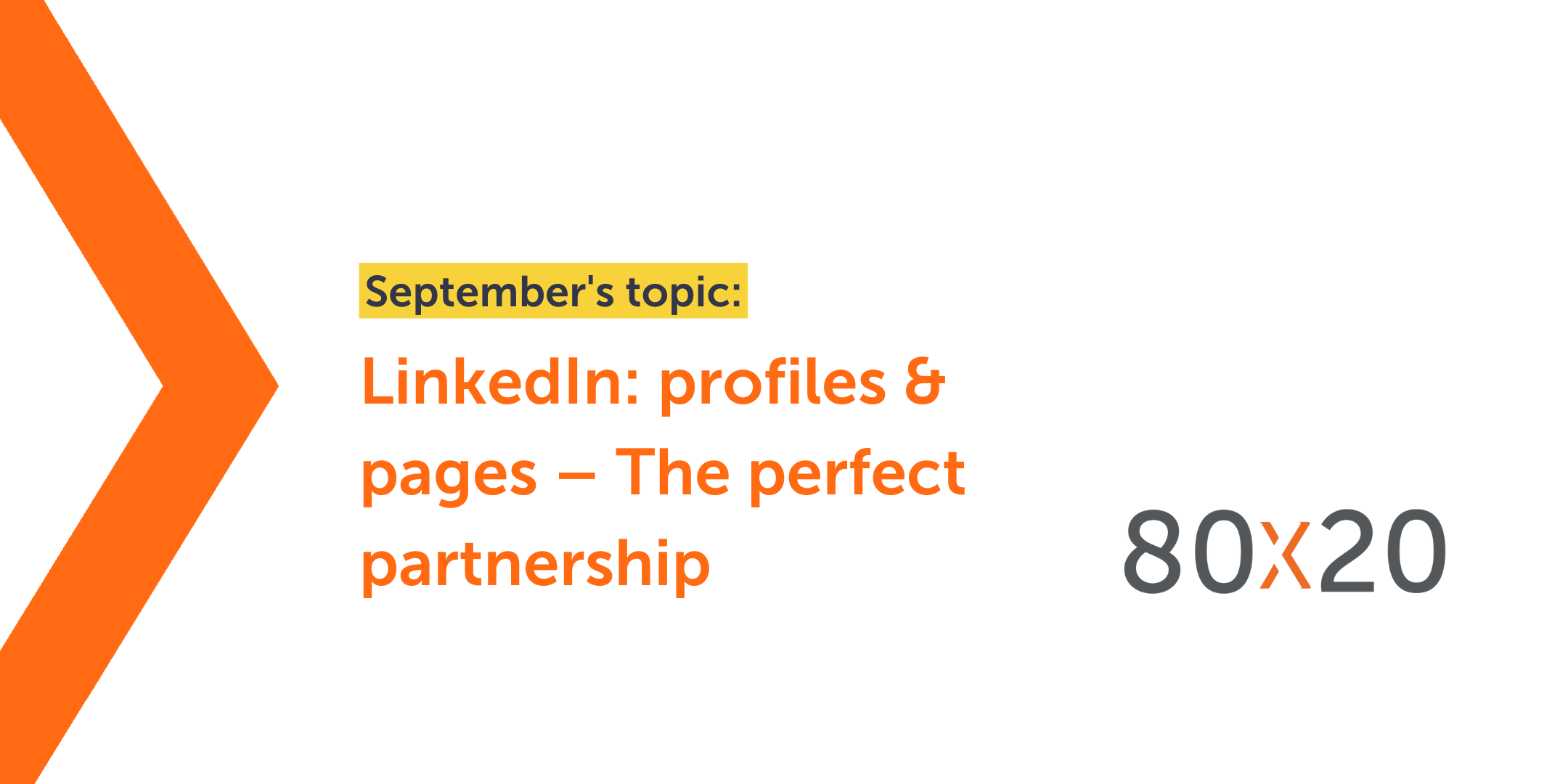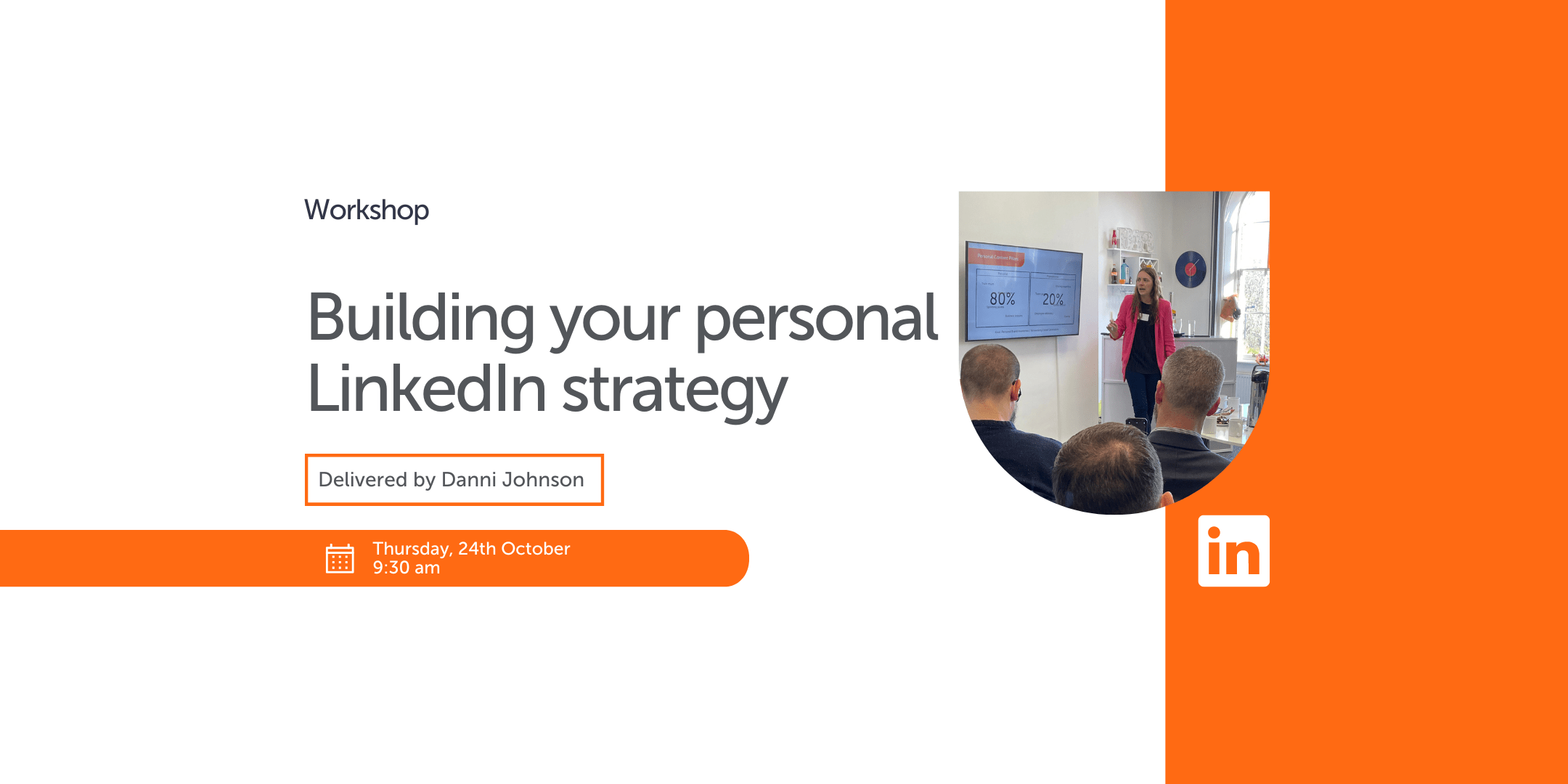In October 2022, I hosted a talk around SEO and brand, as part of the Brand Yorkshire Business Conference. Digital marketing can be a minefield. Where should you be focussing your attention to get the best ROI (return on investment)?
Good question. Sadly, there isn’t a straight answer.
But there IS a process you can follow to help gain stronger enquiries, because no one wants their time wasted with tyre kickers, right?
I talked about:
- The importance of getting your brand present in the right place – it’s simpler than you might think.
- The best order to approach your marketing planning. You’d be amazed at how often it’s done in the wrong order.
- Understanding what type of marketing activity fits with which stage in your prospect’s buying process, after all, nobody makes a B2B purchase on the spot, right?
What would you do?
During the talk, I asked the attendees to imagine this scenario.
You visit Google to search for an HR consultant for your business. You don’t recognise the company in position one on Google, but you do recognise the company in position two.
At this stage, where are you most likely to click first?
From the show of hands in the room, position two was the unanimous choice.
Every business wants to be found on the first page of Google. But if you don’t have any brand presence, will your prospects make an enquiry with you? Let’s explore this a little further…
Where is the right place to place your brand?
These days there are channels such as social media, email, website, PR, advertising, radio, networking etc. With so many channel options available for your brand to be present, where do you even begin?
On average you see between 3,000 and 25,000 brand messages a day. Just look around you, we’re completely surrounded by branding and marketing messages.
Research shows that you have to have between seven to thirteen touch points with a brand and have a need or want for their service/product, only then will you make an enquiry/ purchase with a brand.
Where do you start?
The very first thing to consider is, who is your target audience. If you don’t have any idea who they are, it can be very difficult to work out how to market to them.
Getting a deeper understanding of your audience and who they are can help you:
- Create relevant content
- Know the best way to target them
- Understand their pain points
You can get a deeper understanding of your audience by creating an audience persona document (or a few!) and giving your target customer a personality.
Audience personas are great for your marketing strategy because they act as a framework you can follow for your marketing material, in addition to this they can help facilitate the buying process.
Think about who they are. What do they want from your product or service? Why would they be looking for a company like yours? Where can you find them? When are they likely to react to your marketing message? and How can you target them? These are just some of the questions that can help you really nail down your target audience.
Example Audience Persona
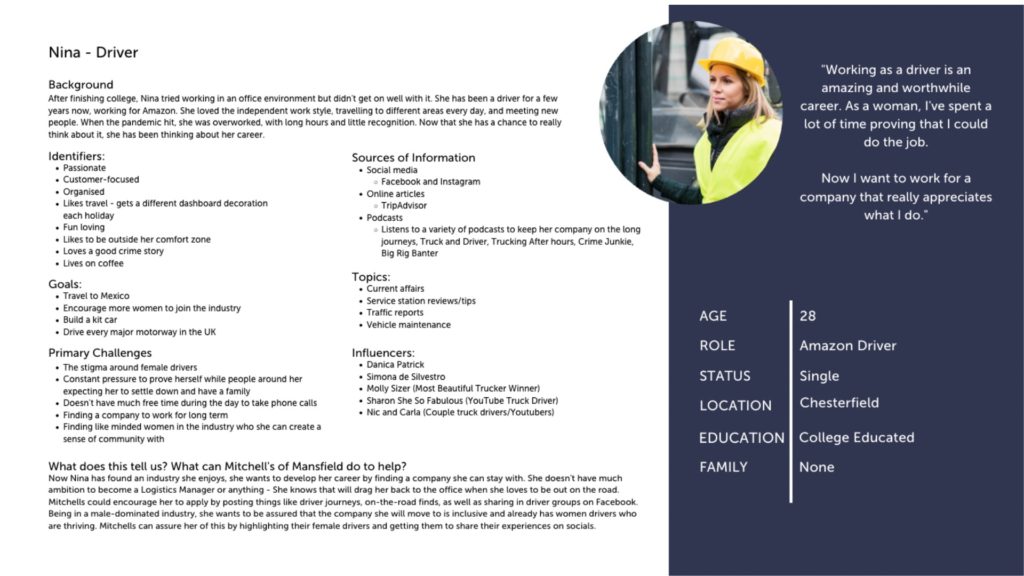
The best order to approach your marketing planning?
There are so many things you can do when it comes to your marketing, how do you know what to do first?
To simplify this, we’ve created a marketing model called SOLAR 7, this is our digital marketing framework to bring clarity and direction to your marketing activities. Let’s take you through the seven-stage process that we follow when developing any marketing strategy for our clients. You can use this for your marketing too.
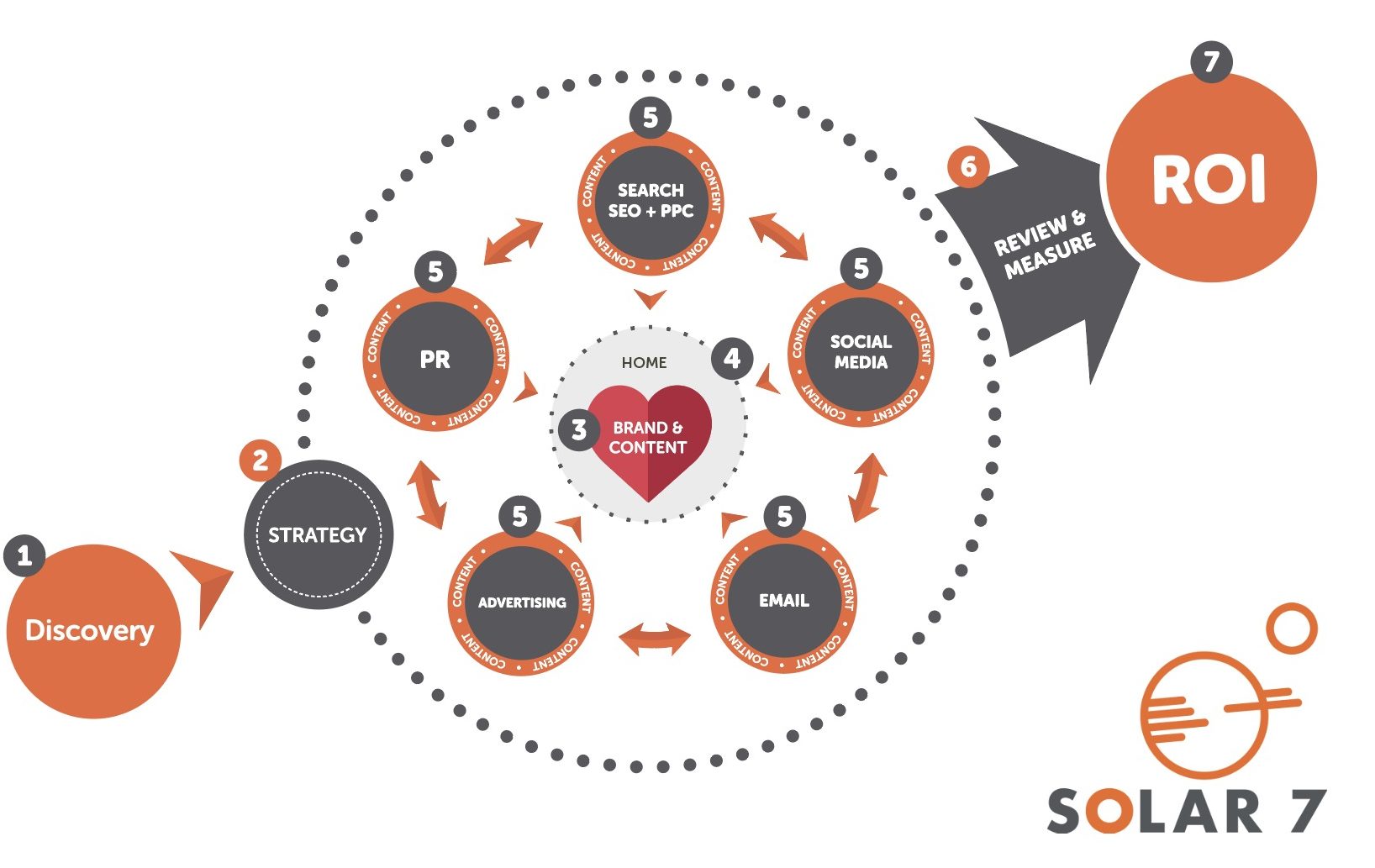
The 7 Stages
Stage One
Discovery
Discovery is all about sitting down and outlining everything. Where you’ve been, where you are now and where you’re going.
During this time, you need to highlight your goals, your audience, your competition, your operations, and your processes; you name it, it needs to be documented. Gather key stakeholders and document as much about your business as possible. That’s how you’ll build a strategy that aligns perfectly with your business and your goals.
Stage Two
Strategy
Now that you have all the information, it’s time for you to create a strategy to keep your future activities focused on your target audience as well as the objectives you want to achieve.
The strategy will encompass all of the activities that need to take place for your marketing to be a success. This is no small task, but it’s an important one nevertheless.
We strongly believe in a strategic marketing process. Without a plan, how do you know where you’re going? That’s why we encourage you to build a roadmap centred around your strategic goals.
The outcome of the strategy session should be a step-by-step plan on what you have to do and when.
Stage Three
Brand and Content
Your brand and content are at the heart of your marketing strategy. It’s the fundamental to the SOLAR 7 model and lays the foundation around what you communicate with your audience.
A brand is so much more than just a logo, it is the personality of your business. Key questions to think about here are:
- How do you want people to feel when they interact with your brand?
- What is your brand’s tone of voice, what are your mission and values, and what do you stand for?
- What are your individual values and how do they align with your target audience?
These are all important questions to ask, as they will form the foundation of any marketing message and communication that is created going forward.
Stage Four
Website
Your website is often the central part of your digital presence – the sun in your marketing solar system. This is where your website visitors go through that all-important decision-making process, and they’ll probably visit your website at least two or three times before they make an enquiry.
Your website’s user experience should be as smooth as possible. Take some time to really get into your audience’s shoes – what would they like to see on your website, what information is important to them, and how can you make the navigation of your website as seamless as possible for them?
This is where leaning on an expert or specialist would be useful.
Stage Five
Channels
With so many platforms out there, how do you decide where you need to be? This stage involves a variety of channels including, but not limited to social media, PR, Pay Per Click, email etc.
Here, you can use the information from your discovery and strategy sessions to identify the channels to focus on first. This will be dictated by your target audience analysis.
Hopefully, if you have created an audience persona, and followed through on the previous stages you’ll have a good idea of which channels to start from.
From here, you can create a multi-channel marketing approach that delivers results.
Stage Six
Review and Measure
The definition of insanity is doing things the same way and expecting a different outcome.
That’s why it’s important to regularly review and measure how your campaigns are performing in line with the goals you set out in the discovery.
You’ll quickly see which channels are effective and which ones need to be improved. Remember, your marketing isn’t a stagnant process. If there are areas to improve, you should be nimble enough to adapt your marketing so it is always giving you the best ROI.
Stage Seven
ROI – Return on Investment
That’s the reason we’re all here, right?
When you follow the above steps and approach your marketing in a strategic way, getting a positive ROI almost becomes inevitable.
Hopefully, now you have a framework on how to approach your marketing and in what order. This leads us to…
The link between your marketing and the buying process
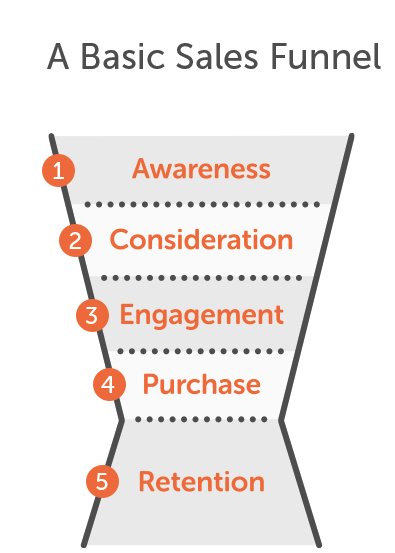
The sales funnel is a process that we all go through in our minds, when making a purchase.
Let’s use the HR provider as an example to allow you to see how a potential customer might work their way done the funnel, to ultimately make a purchase.
1. Awareness
In this stage, the prospect is connected with HR providers on LinkedIn. They see their posts, they might read about them on TheBusinessDesk.com, and they might have even seen them advertise their services. They are aware of their HR services.
2. Consideration
The prospect is aware that they need an HR provider, and they are also aware of the services they offer, they now search ‘HR consultancy Leeds’ on Google to try and make a specific enquiry.
They click on the ones they have heard of and seen on LinkedIn, due to familiarity with the brands. There is an instant trust that is established due to seeing them or being aware of them on other platforms.
3. Engagement
At this stage, the prospect will contact the HR providers either through a personal DM on LinkedIn or call them via the number on the website. They will be open to the sales process and will be looking for quotes.
4. Purchase
At this stage, the prospect will decide which HR provider is the best for them and their business and will go ahead with the purchase.
5. Retention
At this point, the HR company retains their business through regular communication by email or other means, as well as delivering exceptional service.
SOLAR 7 case study – Pinder Cooling & Heating
So let’s bring all the above points together with a case study of one of our clients.

Pinder Cooling contacted us as they were unhappy with the SEO and PPC services their current provider was delivering.
Their branding was completely different to the website, and overall there was no consistency in brand messaging. So we sat down and took them through the SOLAR 7 stages, discussing the areas that needed to be synchronised for brand consistency.
Below is the process we followed to get them a positive ROI:
Discovery
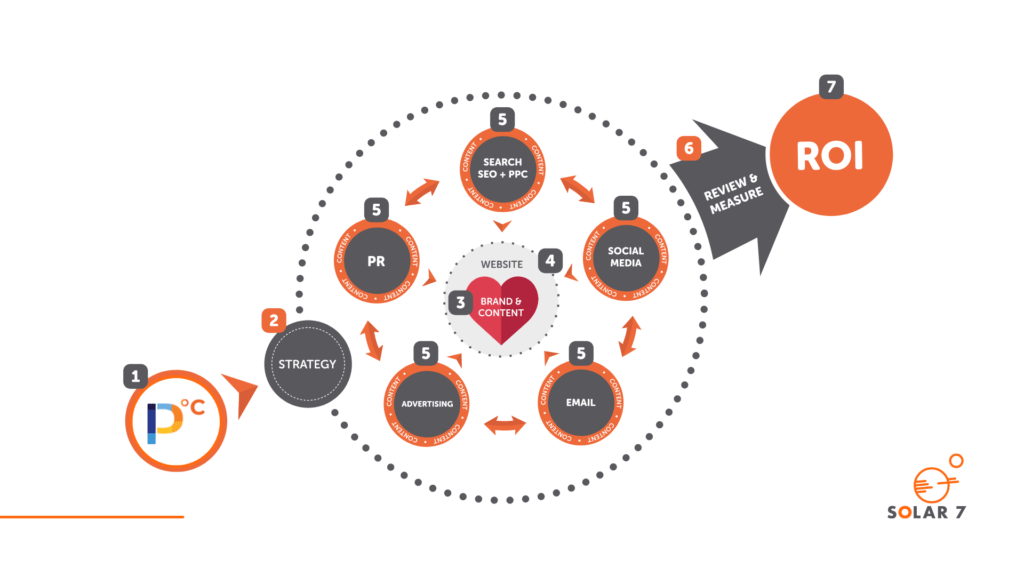
During this stage, we sat down with the key stakeholders of Pinder Cooling and broke everything down. We looked at where they’ve been, where they are, where they want to go, who their audience is, and who their completion is.
This gave us a solid outline of where Pinder Cooling is positioned in the marketplace.
As Pinder Cooling already had a strategy in place we moved on to the next stage that needed attention.
Brand
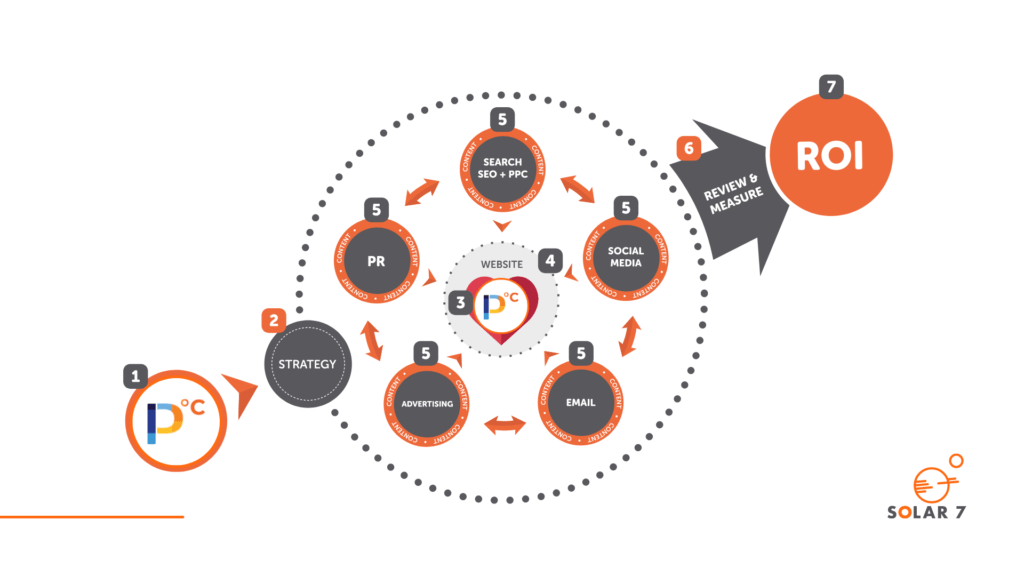
In this stage, we delivered a rebrand. Not only visually but also around their key messaging, core values, tone of voice and any other communication on their social channels and website.
At this point, we moved on to the next stage.
Website
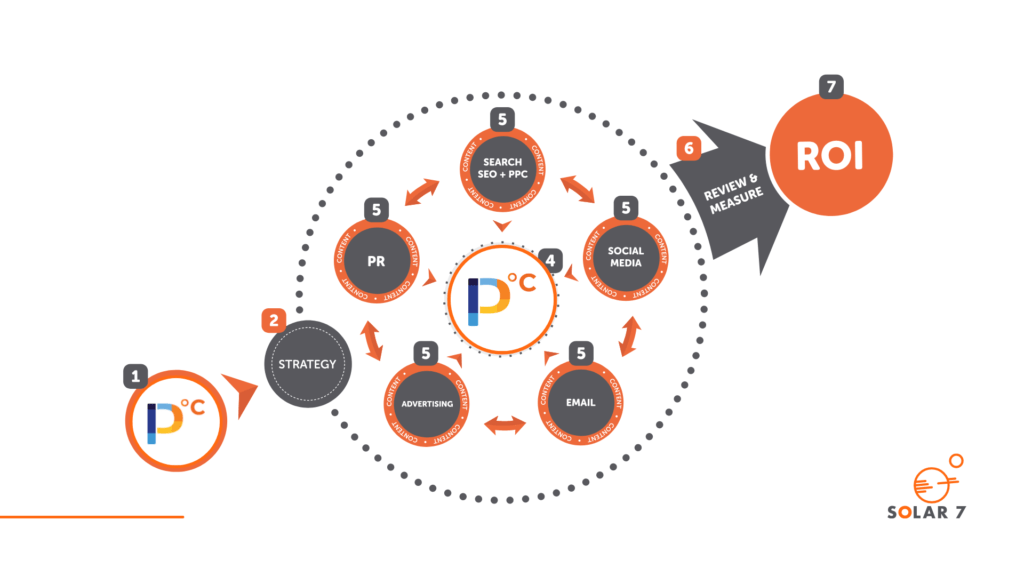
We already knew that one of the key objectives Pinder Cooling came to us with was more focus on their SEO and PPC. This is why we made sure we developed a website that was lean, clean and fast – but also had high-converting PPC landing pages that allowed leads to move seamlessly through the sales funnel.
Marketing Channels
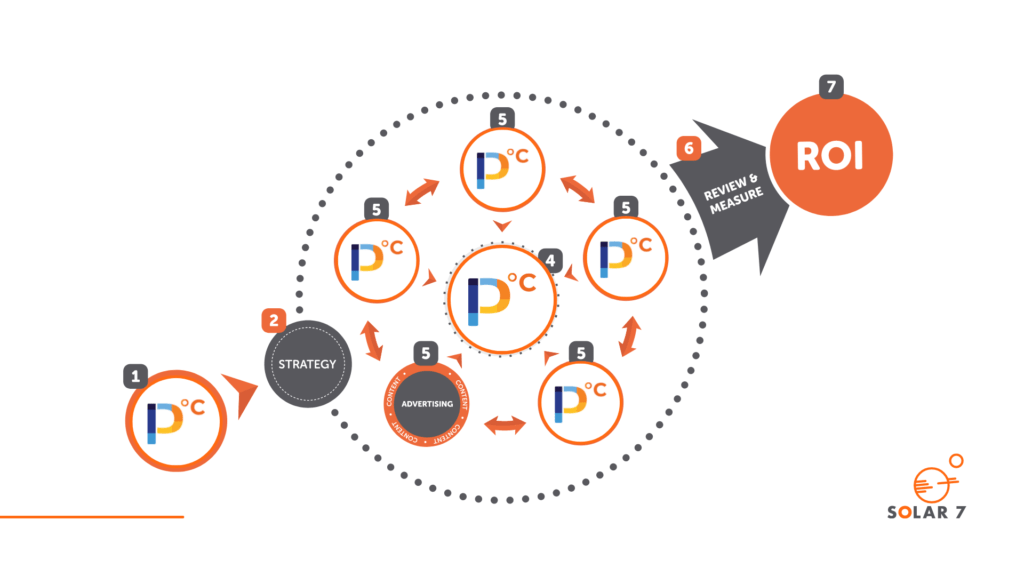
We then looked at the variety of marketing channels that were available to Pinder Cooling and implemented the ones that would be most relevant to their target audience. These were PR, Social Media Marketing, Search Marketing and Email Marketing.
Review and Measure
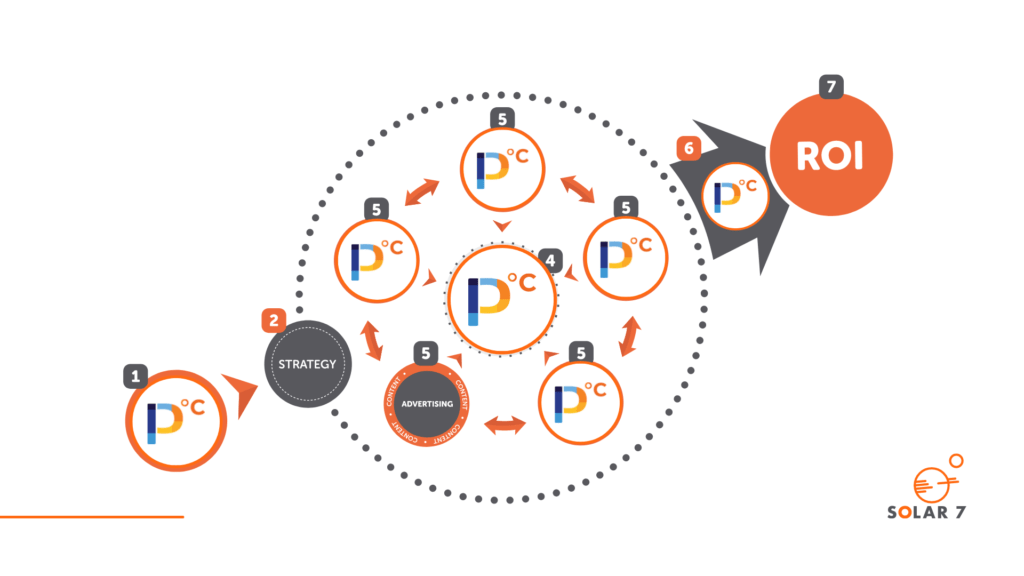
Throughout this process, we were constantly reviewing and measuring what was working and iterating on what wasn’t, to make sure that every piece of marketing for Pinder Cooling aligned with their key objectives and goals.
ROI – The Result
In 2021 this resulted in £290,000 of quotes sent out directly from the activity that we put in place using the specific process outlined above.
The client was over the moon with the results and they were much stronger than those of Pinder Cooling’s previous marketing supplier.
Following the SOLAR 7 process is what helped us achieve these results for our client.
Conclusion
So, the question remains – where should you be placing your marketing budgets?
The answer is…it depends on where your business is in the SOLAR 7 process.
Every business is different, so what we would urge you to do is to look at where you are in the process and think about what needs doing in order to reach your goals.
So in conclusion the argument remains – which is more important SEO or Brand?
The fact that most of the attendees put their hands up to say they would click on position two (the company/brand they recognised) as opposed to position one, signifies that your brand presence is more important than simply focusing on SEO.
Useful tools – Xpand webinars
Over the years we have delivered many webinars that cover and simplify most of the concepts highlighted in this blog, you can watch them completely free.
If you’d like to get more help with your marketing, get in touch.

